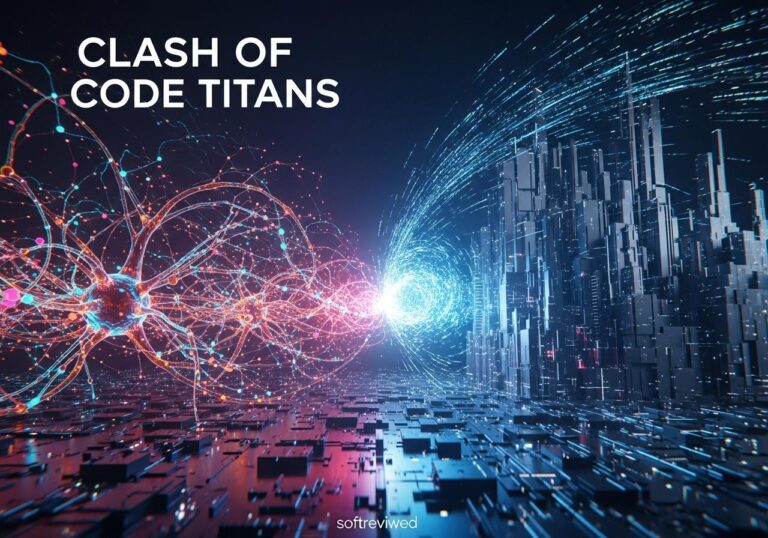The artificial intelligence world is constantly pushing boundaries, and OpenAI has just raised the bar, and the price tag, with its new o1-pro model. This advanced AI, now accessible via the developer API, promises enhanced reasoning capabilities and more reliable responses compared to the standard o1 model. But, this leap in performance comes with a significant cost, leaving developers to ponder whether the upgrade is worth the expense. Let’s explore the details of this powerful new model.
A New Tier of AI Reasoning Power: What is o1-pro? 🤔
OpenAI’s o1 series of models is designed with a focus on reasoning, using reinforcement learning to “think” before providing an answer. The o1-pro model is a more powerful version of the standard o1, leveraging additional computational resources to achieve what OpenAI describes as “consistently better responses.” This translates to a greater ability to handle complex, multi-step queries, making it particularly suitable for technical, scientific, and research applications, where accuracy and reliability are paramount. Unlike its predecessor, it’s less about conversational flair and more about logical precision, making it a specialized tool for those needing deeper analysis.
How Does it Stack Up? 📈
While the base o1 model is already designed for reasoning tasks, the o1-pro is built for enhanced performance with some key differences:
- Increased Computing Power: o1-pro utilizes more computational resources to “think harder” about complex problems, leading to more accurate and consistent results.
- API Access: It is accessible via the developer API and primarily targets AI agents through OpenAI’s new Responses API, marking a departure from the traditional Chat Completions API.
- Enhanced Reasoning: o1-pro aims for precision, outperforming GPT-4.5 in reasoning depth and even surpassing other models like Claude 3.7 Sonnet in specific tasks such as structured code generation.
- Multimodal Capabilities: Like the o1 model, o1-pro supports function calling, structured outputs and image inputs.
Here’s a quick comparison of the key features between o1-pro, o1, and GPT-4.5:
| Feature | o1-pro | o1 | GPT-4.5 |
|---|---|---|---|
| Reasoning | Enhanced | Standard | Good |
| Context Window | 200,000 tokens | 200,000 tokens | 128,000 tokens |
| Input Tokens Cost | $150/million | $15/million | $75/million |
| Output Tokens Cost | $600/million | $60/million | $150/million |
| API | Responses API | Chat Completions API | Chat Completions API |
| Image Input | Supported | Supported | Supported |
| Streaming Support | Not Supported | Supported | Supported |
The Price of Power: 💰 A Premium Offering
The improved capabilities of o1-pro come at a steep price. OpenAI is charging developers:
- $150 per million input tokens (approximately 750,000 words)
- $600 per million output tokens
This is twice the price of OpenAI’s GPT-4.5 for input tokens and a staggering ten times the price of the regular o1 model. This makes o1-pro OpenAI’s most expensive AI model to date, targeting enterprise users and those willing to pay for top-tier AI performance. Simon Willison, a developer who tried the model, noted that it was “10x the price of their o1… and a full 1,000x times more expensive than their cheapest model, gpt-4o-mini!”
Early Reactions: Is it Worth the Hype? 🤔
Initial feedback on o1-pro is mixed. While OpenAI claims it offers “consistently better responses,” particularly in areas like code generation and mathematical problem-solving, some users have reported only marginal improvements. Some early testers found that the model struggled with tasks that require visual reasoning or understanding of optical illusions, and even with some complex logic problems like solving Sudoku puzzles.
Despite the mixed reviews, there are also positive reports. Some users have lauded o1-pro’s ability to process and understand highly complex code and documentation, identifying bugs and summarizing significant changes with impressive accuracy. This has led some developers, especially those involved in research or machine learning, to consider the high cost worthwhile, emphasizing the value in solving challenging problems and identifying code errors. As one user on Reddit mentioned, “o1 pro is without a doubt worth the $200/month for anyone who spends a lot of time on very complex programming tasks, especially research related or ML related.”
Who Gets to Play? 🔑 Selective Access for Now

Currently, access to o1-pro is restricted to select developers – specifically those who have spent at least $5 on OpenAI API services. This is not intended to be a broadly accessible model for all API users at this time. This limited availability is likely a strategy to manage demand and ensure that the model is being used by experienced developers with a clear understanding of how to integrate advanced AI solutions into their workflows.
How Does Whisk Animate Compare to OpenAI’s o1-pro in Terms of Cost and Reasoning Capabilities?
When evaluating how does whisk animate compare to OpenAI’s o1-pro in terms of cost and reasoning capabilities, it becomes clear that whisk animate with veo 2 offers an affordable option without compromising on analytical precision. Its innovative features enhance user experiences while maintaining a competitive edge in pricing.
The API Shift: Responses API ➡️
The o1-pro model marks another significant shift in how OpenAI is making its models available. It is the first model to exclusively use the new Responses API rather than the Chat Completions API. This means that developers need to adapt their tools to integrate with this new API, which could add to the development effort. However, it opens up potential for more advanced AI agents that can more effectively handle complex reasoning tasks.
Where is This High-Performance AI Headed? 🚀
The release of o1-pro signals a shift in OpenAI’s strategy, prioritizing high performance and precision for specific use cases rather than mass adoption. Its focus on logical deduction and complex reasoning sets it apart from its more creatively inclined counterparts, which could reshape AI’s role in areas like science, engineering, and high-level technical analysis.
While the high cost may limit its widespread use, o1-pro will likely push competitors to refine their own models and potentially pave the way for more specialized AI tools. This could also lead to the development of hybrid models that blend logical reasoning and creative problem-solving, further advancing the capabilities of AI.
So, Is o1-pro the Right Choice for You? 🤔
The decision to use o1-pro hinges on specific needs and budget considerations. If you require the utmost accuracy and reliability for complex tasks, are working with AI agents using the Responses API, and are willing to pay a premium, then o1-pro might be a worthwhile investment. However, developers seeking to integrate AI into more general applications or looking for cost-effective solutions may find other models, such as the standard o1 or GPT-4.5, more suitable.
The pricing of o1-pro certainly marks a turning point in how AI models are being accessed, and how they will be priced moving forward. As more developers begin to use the model, it remains to be seen how the market will respond to such premium offerings.
For further exploration into OpenAI’s models, visit the official OpenAI API documentation.







